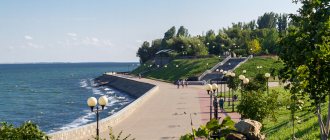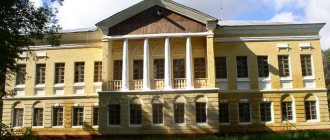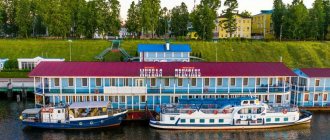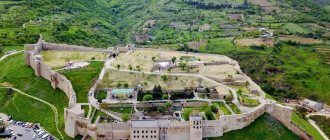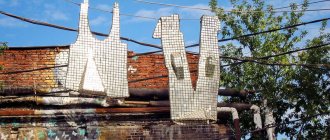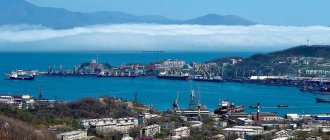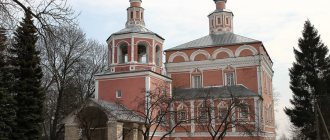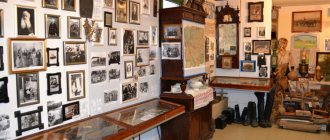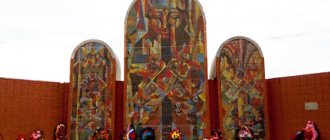Etymology of the word
In the Old Russian language, a reach on a river meant a wide, calm place with great depth, where waves constantly splash gently on the shore.
Slavic languages have retained this original meaning:
- in Old Russian “ples” is a straight section of a stream between two bends.
- in Ukrainian “pleso” – widening of the riverbed.
- in Czech and Slovak “pleso” is a deep place.
Found in one of the dialects of the ancient Greek language, the word "palos" has the meaning of "mud, swamp", like the Lithuanian "pelke" and the Latin "pullus". Translations among words from Greek, Latin and ancient Indian languages do not sound very convincing. It’s unlikely that this was the name given to the spacious expanse of the river.
A recognized source is the Hebrew designation for a straight road, a level object, a natural object - piles.
Another meaning has fallen out of use. A long time ago, this was the name given to fish tail.
Recommended reading: Water bodies from A to Z
“Plyos” according to explanatory and toponymic dictionaries
V.I. Dal and D.N. Ushakov list several possible forms. Even the gender of the noun differs depending on the dialect:
- pleso – neuter.
- reach - female.
- reach - male.
- Plesina is used in the feminine or masculine gender.
The value does not change.
A stretch is a deep section of a river between turns, rifts or islands with a quiet, even flow. The mass of water seems to lie in a bowl formed by the alternation of “roll – reach – roll”.
Some researchers, following V. Nikonov, believe that this word was previously applied to lakes. Proof is the numerous reservoirs with this name on lands inhabited by Slavic tribes.
An expert in the field of local geographical terms, E. Murzaev, established that in some places small river bays and the continuation of coastal ledges were also called.
Many settlements were given a consonant name. The famous Plyos on the Volga attracts tourists with its ancient history, and artists with its picturesque views.
The river reach is important for navigation. The barge haulers measured their path in stretches.
Marine dictionaries use the wording “uniform navigability.” This means that the vessel can pass through the area without fear of encountering any obstacles along the way.
Recommended reading: how many meters is the environmental protection zone near the river.
Plyos ()
What to see
Since Plyos is located on a hilly coast, to get to know it you will have to overcome a lot of ups and downs, so it is better to take care of good physical shape in advance.
But this not the easiest journey is worth it: the magnificent views and landscapes that open to the eye during the walk will be remembered for a long time.
Typically, tourist routes around the city begin on the Volga embankment, on Lunacharsky Street. Here is the house-museum of the artist Isaac Levitan , housed in a merchant mansion built in the early 19th century.
Here you can see the room that Isaac Ilyich rented with his friends, as well as an exhibition of his works. Opposite the museum there is a monument to the artist .
Next door, in a building that previously housed a girls' gymnasium, then an elementary school, and after the 1917 revolution - an orphanage, the Levitanovsky Cultural Center - a place where major events, exhibitions, conferences, and film screenings are held.
landscape museum in Russia . It occupies a former merchant mansion, built at the end of the 18th century, which is depicted in Isaac Levitan’s painting “Evening. Golden Reach". The museum exhibits paintings by famous Russian landscape painters Alexei Savrasov, Ivan Shishkin, Vasily Vereshchagin and others.
Opposite the museum on the banks of the Volga you can see the sculpture “Summer Resident”. A bronze girl sits on a bench and admires the easel and the picturesque river expanses. It is assumed that the summer resident has a real prototype - Sofya Kuvshinnikova, the student and lover of Isaac Levitan.
If you turn from the Landscape Museum deeper into the city towards Varvarinskaya Street, you will see the snow-white Varvarinskaya Church , built in 1821. She is also immortalized in the painting by I. I. Levitan “Evening. Zolotoy Plyos” and has remained virtually unchanged since then.
From here, along Kirov Street, it is easy to come to a wooden staircase and climb Mount Levitan - the place where Isaac Ilyich painted his famous landscapes. Here stands the Church of the Resurrection, which is easily recognizable in the famous painting “Above Eternal Peace .
In fact, the church in the picture burned down in 1904, and its twin sister stands on the mountain. In addition, the long climb up the mountain will be rewarded with breathtaking views from here.
On the other bank of the Shokhonki River is Cathedral Mountain , from the observation decks of which very picturesque views open, especially at sunset. It was from here that the city of Plyos began in ancient times, and wooden fortresses were built here, of which only a moat and part of an earthen rampart remain today.
Here, on Cathedral Hill, is the building of the Government Offices , built at the end of the 18th century. Now it houses exhibitions of the Plyos Museum-Reserve dedicated to the early history of the city. It is here that you can learn about the construction of the first and second fortresses, as well as see interesting archaeological finds.
monument in Russia , the son and heir of Dmitry Donskoy, who was previously considered the founder of Plyos. It appeared on Cathedral Hill for the 500th anniversary of the city back in pre-revolutionary times, in 1910. The author of the monument is sculptor S. Aleshin.
Opposite stands the snow-white Assumption Church - the oldest stone building in the city. It was built in 1699 on the site of a burnt wooden church. Previously, the Kazan Church stood next to it, but it was lost during Soviet times.
What the temple complex looked like can be seen in Isaac Levitan’s painting “The Quiet Abode,” and a worship cross was installed on the site of the destroyed Kazan Church.
At the southern descent from Cathedral Mountain there is Cathedral Square, where there is another temple complex of the Trinity and Vvedenskaya churches .
The elegant summer Trinity Church was built in 1808, and in 1828 the more squat and modest Vvedensky Church appeared nearby.
A few steps from the square on Lev Tolstoy Street there is a private house-museum of decorative glass . It belongs to the artist Alexander Timofeev. The museum displays his works: stained glass, fiberglass, art glass, as well as paintings.
From here it is easy to walk to Karl Marx Street, the former Dvoryanskaya Street. Once upon a time this was the most prestigious area of Plyos; houses of respected people in the city stood here. At the beginning of the street there is a complex of red brick buildings - Gorbunovskaya Hospital , built in memory of his deceased son and donated to the city by the merchant Grigory Gorbunov.
From Karl Marx Street you can take a wooden staircase down to Nikanorka Street, where on the right side stands red brick fire department building
It is noteworthy that it is without a tower. This was how the project was conceived, since due to the hilly terrain, the entire city cannot be seen from any high place.
Diagonally from the fire station is the Trade Square , where the buildings of the 19th century are perfectly preserved. This is the elegant Resurrection Church of 1817, built in honor of the victory over Napoleon, as well as the building of the upper (Flour) shopping arcades .
Lenin Street, lined with colorful old houses, stretches from the square - an excellent place for leisurely walks. She goes to the Volga, where on the bank there is a monument to the cat Mukha . The real Fly died tragically while protecting her kittens from a yard dog, and in 2008 she was immortalized in concrete.
Embankment, also known as Sovetskaya Street, is one of the most attractive places in the city. On the one hand there are picturesque Volga expanses, and on the other there are ancient merchant houses. One of them is the Sobolev House , built in the mid-19th century.
Since the owner of the house was friends with A.N. Ostrovsky, Alexander Nikolaevich has been here several times. Currently the house belongs to the yacht club.
Next door are the lower (Meat) shopping arcades - two two-story buildings built in the first half of the 19th century. Once upon a time there was a lively trade here; today the building houses a gallery of arts and crafts of the Ivanovo region, a souvenir shop and shops.
Around the corner from Proezdny Lane is the entrance to the oldest shopping street - Kalashnaya . Previously, it stretched from the fortress moat to the Volga through the shopping area, now it has been only partially reconstructed; here, as in the old days, there are wooden trading benches and active street trading.
The Volga embankment in Ples is like an open-air museum. On the corner with Kalashna stands the house of Groshev , decorated with columns, a little further - the house of the Smirnov merchants with a rounded corner and an elegant balcony, next door is the beautiful house of Maklashin , one of the pre-revolutionary heads of the city.
Nearby is one of the most beautiful buildings in Plyos - the house of the Bakakin-Vekshin merchants , large Plyos traders. Built at the turn of the 18th and 19th centuries, it has two floors and windows decorated with stone architraves. It is noteworthy that the second floor is higher than the first, since the halls for ceremonial receptions were located there.
Nearby is the two-story house of the merchant Kalugin , where you can now rent stylized apartments for short-term stays, and next door is the Vvedensky house with three pilasters, although according to the canons of classicism there should be an even number of them, such is the architectural license.
At the beginning of Sovetskaya Street stands the estate of the Moiseev nobles , popularly known as the “house with columns”. The building is almost two hundred years old and currently houses the city administration. Next door to it is red brick house of the merchant Novozhilov
There are also interesting places near Plyos. One of them is the Milovka estate , located to the west of the city. Founded at the turn of the 18th and 19th centuries, it is considered a monument of architecture and landscape art.
Initially it belonged to the nobles Chernev, then to the manufacturer Gorbunov; during Soviet times, the estate was nationalized and abandoned. Milovka received a second life after Russian President and Prime Minister Dmitry Medvedev became interested in it.
With his assistance, not only the estate was restored, but also many buildings in the city itself.
To the east of Plyos there is another interesting place - the village of Shalyapino , in which the dacha of Fyodor Shalyapin . The famous singer was captivated by the beauty of these places, so he bought a plot of land on the banks of the Volga with the aim of building a dacha here and even actively participated in the development of the project.
The house was built in 1914, but Chaliapin, due to various circumstances, never saw it. In Soviet times there was a rest house here, but now the building is abandoned.
How to visually identify a reach on a river
Being able to read the river is important not only for pioneer sailors. Fans of winter fishing are looking for suitable places to drill a hole. A deep reach on the river means that fishing will be successful, because fish are hiding there from the frost.
We recommend reading: A river basin is: definition of a river basin
To avoid mistakes, you need to know exactly where to look. To do this, they study the principle of the formation of depressions in the river bed.
A reach on a river is a place where, during floods, the water accelerates and washes away soil from the bottom.
Most often this happens in areas with a flat bottom, channel narrowings and bends. The water overcomes resistance, changes direction, accelerates, and washes away the concave shore, forming a transverse slope at the bottom.
A hole is formed - the deeper the angle and the faster the flow. The shore becomes steep, the water, with the end of the flood, is calmer and more saturated dark in color. Whereas nearby, on a riffle - a shallow area, the disturbance of the water is obvious.
The pattern: “roll – reach – roll” is well defined by the nature of the current.
What to see in Plyos?
Poetic and quiet Plyos is one of the oldest Volga settlements. In the 19th century it received the name “Russian northern Switzerland”. The town was visited by many Russian celebrities of the past - Chaliapin, Savrasov, Repin, Rachmaninov and Vereshchagin visited here. But real fame for Plyos was brought by Isaac Levitan, whose best canvases were painted from local landscapes. A few days are enough to see all the sights of Plyos and admire its beautiful views, but you can stretch out the pleasure and stay for a week, because there is always something to do in Plyos. A trip here will definitely be remembered and will warm your soul with warm memories for a long time.

